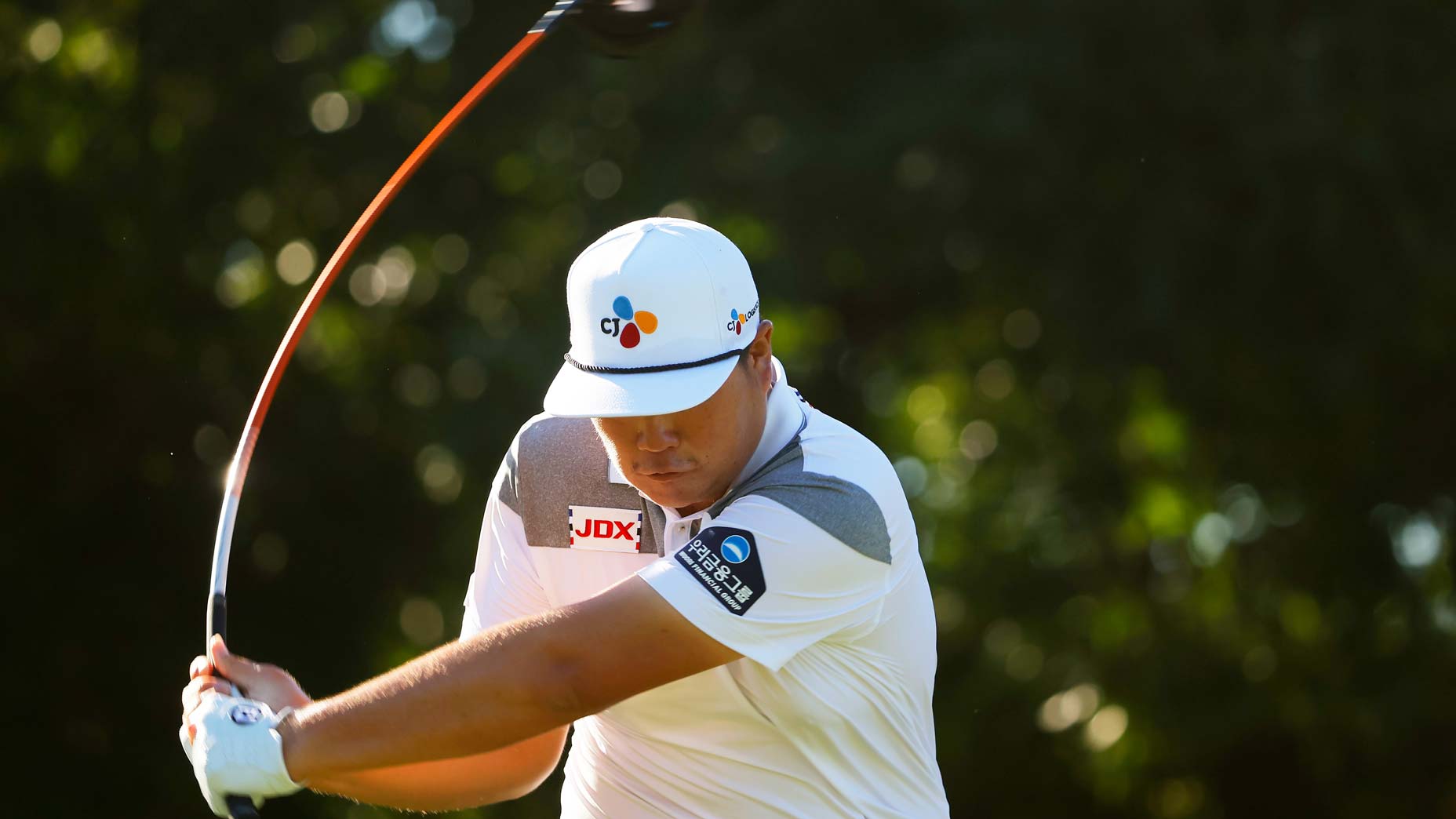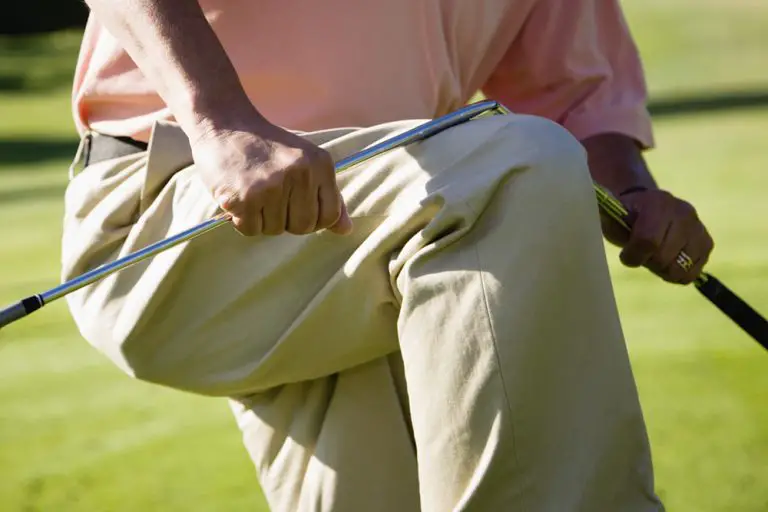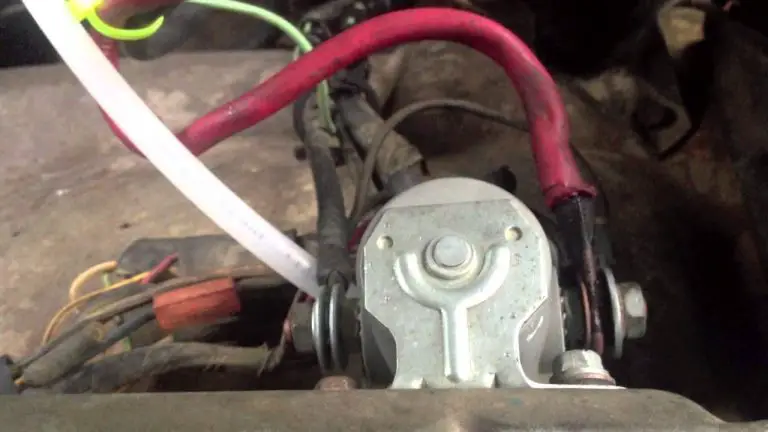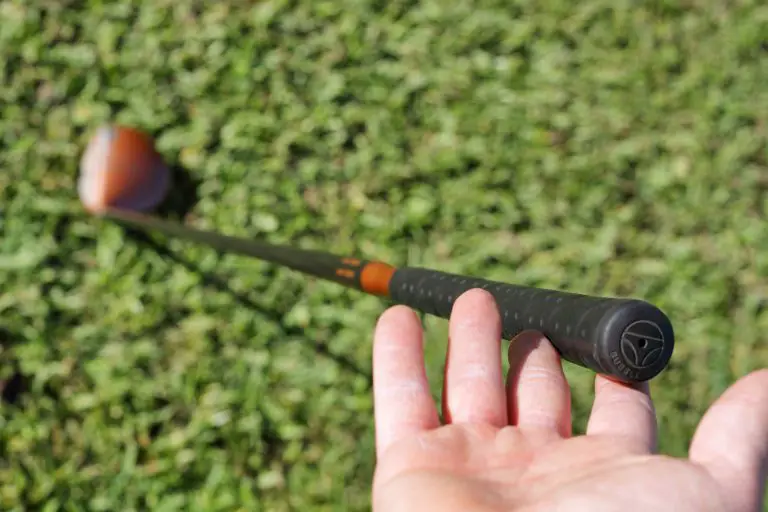Senior Flex Vs Regular Flex

When it comes to maximizing your performance on the golf course, selecting the right golf club flex is a crucial consideration. The flex of the golf club shaft directly influences various aspects of your shots, including distance, trajectory, accuracy, control, and feel. Among the different flex options available, senior flex and regular flex are two commonly encountered choices.
Senior flex is specifically designed for players with slower swing speeds, providing increased clubhead speed and improved launch conditions. It offers a higher degree of flexibility compared to regular flex, making it ideal for older golfers or beginners who are still developing their swing speed and technique. On the other hand, regular flex is a versatile option suitable for a wide range of players, offering a balanced blend of control, accuracy, and distance.
To make an informed decision between senior flex and regular flex, understanding their characteristics, suitable player profiles, advantages, and disadvantages is essential. Factors such as swing speed, player attributes, skill level, and personal preferences also play a significant role in selecting the appropriate flex for your golf clubs.
In this article, we will explore the differences between senior flex and regular flex, delve into their impact on shot performance, discuss the importance of custom fitting, debunk common myths, and provide practical tips for caring and maintaining your golf clubs. By the end, you’ll have a comprehensive understanding of senior flex and regular flex, enabling you to make an educated decision that enhances your game on the fairways.

Understanding Flex in Golf Clubs
Before diving into the specifics of senior flex and regular flex, let’s first understand what golf club flex entails and how it affects your shots.
What is Golf Club Flex?
Golf club flex refers to the amount of bending or flexibility in the shaft of a golf club during the swing. It influences how the clubhead reacts to your swing, affecting the trajectory, accuracy, distance, and feel of your shots.
How Does Flex Affect Golf Shots?
The flex of a golf club influences the timing and release of energy during the swing. It determines how much the clubhead lags behind the grip, which directly impacts the launch conditions of the ball. A stiffer flex tends to result in a lower ball flight, while a softer flex promotes a higher trajectory.
Factors Affecting Flex
Several factors contribute to the flex characteristics of a golf club. Understanding these factors can help you make an informed decision when choosing between senior flex and regular flex.
- Club Shaft Material: The material used in the construction of the club shaft, such as steel or graphite, affects the flex properties. Graphite shafts tend to offer more flex compared to steel shafts.
- Club Shaft Design: The design elements of the shaft, such as its length, diameter, and taper, influence the flex profile. Tapered shafts typically provide more flex in the tip section.
- Swing Speed: Your swing speed plays a crucial role in determining the appropriate flex for your golf clubs. A faster swing speed generally requires a stiffer flex to optimize energy transfer, while a slower swing speed benefits from a softer flex for improved clubhead speed.
- Player’s Strength and Skill Level: Factors like your physical strength, technique, and skill level can impact the ideal flex for your game. Players with more strength and skill may be able to handle a stiffer flex, while those with less strength or beginner-level players may benefit from a more flexible shaft.
Now that we have a foundational understanding of golf club flex, let’s explore the characteristics and considerations of senior flex and regular flex.
Different Types of Golf Club Flex
Golf club flexes are typically categorized into different ratings, ranging from extra stiff to ladies flex. In this section, we will focus on senior flex and regular flex, highlighting their attributes, suitable player profiles, advantages, and disadvantages.
Senior Flex
Characteristics of Senior Flex
Senior flex is designed for players with slower swing speeds, typically ranging from 75 to 85 miles per hour. It offers a higher degree of flexibility compared to regular flex, allowing for increased clubhead speed and improved launch conditions.
Suitable Player Profile for Senior Flex
Senior flex is particularly beneficial for golfers who fall into the following categories:
- Senior Golfers: As the name suggests, senior flex is commonly used by older golfers who typically have slower swing speeds. It helps compensate for reduced power and promotes optimal ball flight.
- Beginner Golfers: Beginners who are still developing their swing speed and technique can benefit from the added forgiveness and ease of use provided by senior flex shafts.
Advantages of Senior Flex
- Increased Clubhead Speed: Senior flex shafts can enhance clubhead speed, resulting in greater distance potential for players with slower swing speeds.
- Improved Launch: The added flex in senior shafts allows for a higher launch angle, which can help generate more carry distance and better stopping power on the greens.
- Added Forgiveness: The increased flex provides more forgiveness, reducing the likelihood of mishits and promoting straighter shots.
Disadvantages of Senior Flex
- Reduced Control: Due to the increased flex, senior shafts may sacrifice some control compared to stiffer flex options. Players with more advanced skills may find it challenging to achieve the desired shot shape and control.
- Limited Applicability: Senior flex is not suitable for players with faster swing speeds as it can result in excessive clubhead lag, leading to inconsistent and less accurate shots.
Regular Flex
Characteristics of Regular Flex
Regular flex is one of the most commonly used flex options in golf clubs. It offers a balanced level of flexibility, catering to a wide range of swing speeds, typically between 85 and 95 miles per hour.
Suitable Player Profile for Regular Flex
Regular flex is suitable for a broad spectrum of players, including:
- Mid-Handicap Golfers: Golfers with moderate skill levels and swing speeds fall into the regular flex range. This flex provides a good balance between control and distance.
- Average Swing Speed Golfers: Players with swing speeds within the regular range will find this flex to be a suitable choice for their game.
Advantages of Regular Flex
- Versatility: Regular flex shafts are well-rounded and suitable for a wide range of players with varying swing speeds and skill levels.
- Control and Accuracy: The moderate flex of regular shafts allows for a good blend of control and accuracy, enabling players to shape shots and achieve desired ball flights.
- Consistency: Regular flex provides a consistent feel throughout the swing, promoting repeatable performance and shotmaking.
Disadvantages of Regular Flex
- Potential Distance Limitations: Players with faster swing speeds may not optimize their distance potential with regular flex shafts, as they might require a stiffer flex to maximize energy transfer.
- Limited Tailoring: While regular flex is versatile, players with specific swing characteristics or unique requirements may benefit from more customized flex options.
Now that we have explored the characteristics of senior flex and regular flex, let’s delve into the considerations involved in choosing between the two.
Choosing Between Senior Flex and Regular Flex
Choosing the right flex for your golf clubs involves assessing various factors, primarily focused on swing speed but also considering other important considerations. Let’s take a closer look at the key aspects to consider when deciding between senior flex and regular flex.
Assessing Your Swing Speed
Importance of Swing Speed
Your swing speed is a fundamental factor in determining the appropriate flex for your golf clubs. It directly affects the timing of the release of energy and the performance of the shaft during the swing.
How to Measure Swing Speed
Measuring your swing speed can provide valuable insights into the appropriate flex for your game. Here are a few common methods to measure your swing speed:
- Launch Monitor Technology: Golf simulators or launch monitors equipped with advanced tracking systems can accurately measure your swing speed.
- Clubfitting Sessions: Professional clubfitting sessions often include swing speed measurements to guide the selection of appropriate club specifications.
Once you have a general idea of your swing speed, you can consider the following guidelines when choosing between senior flex and regular flex.
Matching Flex to Swing Speed
Swing Speed Guidelines for Senior Flex
If your swing speed falls within the range of 75 to 85 miles per hour, you are likely a good candidate for senior flex. The added flexibility of senior flex shafts can help maximize your clubhead speed, distance, and launch conditions.
Swing Speed Guidelines for Regular Flex
If your swing speed falls within the range of 85 to 95 miles per hour, regular flex is a suitable choice. It offers a balanced blend of control, accuracy, and distance for players within this swing speed range.
It’s important to note that these swing speed guidelines serve as a general starting point, and personal preferences and swing characteristics should also be taken into account.
Considerations Beyond Swing Speed
While swing speed is a primary consideration, other factors can influence the ideal flex for your golf clubs. Let’s explore some additional considerations that can guide your decision-making process.
- Player’s Strength and Physical Condition: Players with greater strength and physical conditioning may be able to handle stiffer flex options, even with moderate swing speeds. Conversely, players with limited strength or physical conditions may benefit from the added assist provided by more flexible shafts.
- Skill Level and Playing Style: Your skill level and playing style can also influence the flex that suits your game. Advanced players who prefer to shape shots and require more precise control may lean towards regular flex. Beginners or players focusing on maximizing distance and forgiveness may find senior flex more suitable.
- Player Preferences and Feel: Personal preferences play a significant role in club selection. Some players may prefer the feel and feedback provided by a particular flex, even if it doesn’t perfectly align with their swing speed. Testing and experimentation can help determine the flex that feels most comfortable and provides optimal performance.
By considering swing speed, player attributes, skill level, and personal preferences, you can make an informed decision when choosing between senior flex and regular flex.
In the next section, we will explore the impact of flex on shot performance, including distance, trajectory, accuracy, control, feel, and feedback.
Impact of Flex on Shot Performance
The flex of your golf club can significantly impact various aspects of shot performance, including distance, trajectory, accuracy, control, feel, and feedback. Let’s delve into each of these factors to understand how flex influences your shots.
Distance and Trajectory
How Flex Affects Distance
The flex of the club shaft directly influences the transfer of energy from your swing to the ball. A stiffer flex tends to store more energy, resulting in a greater potential for distance. However, players with slower swing speeds may not be able to fully benefit from the added energy transfer provided by a stiffer flex.
How Flex Affects Shot Trajectory
The flex of the shaft also affects the launch angle and spin rate of the ball, which in turn impact shot trajectory. A softer flex promotes a higher launch angle, while a stiffer flex tends to produce a lower ball flight.
Accuracy and Control
Flex’s Influence on Accuracy
The flex of the club shaft can influence the timing of the release and the consistency of face angle at impact. Different players may find varying levels of accuracy with different flex options. It’s essential to choose a flex that allows you to consistently square the clubface at impact for improved accuracy.
Flex’s Influence on Shot Control
Flex plays a role in shot control, particularly when it comes to shot shaping and shot dispersion. Stiffer flex options generally offer more control, allowing skilled players to manipulate the ball flight and achieve desired shot shapes. Softer flex options may sacrifice some control, leading to wider shot dispersion.
Feel and Feedback
Flex’s Impact on Feel during the Swing
The flex of the shaft influences the overall feel of the club during the swing. Softer flex options can provide a more pronounced “whip” sensation, allowing players to feel the loading and unloading of the shaft. Stiffer flex options offer a more rigid and stable feel throughout the swing.
Feedback from Different Flex Types
Flex also affects the feedback you receive from your shots. Softer flex shafts tend to provide more feedback on mishits and off-center strikes, allowing you to better assess your impact quality. Stiffer flex shafts may provide less noticeable feedback in this regard.
Considering the impact of flex on shot performance, it’s crucial to choose a flex that aligns with your desired distance, trajectory, accuracy, control, feel, and feedback characteristics.
In the next section, we will explore the importance of custom fitting and flex selection to optimize your golf club performance.
Custom Fitting and Flex Selection
Custom fitting is a crucial aspect of optimizing your golf club performance, and selecting the appropriate flex is an integral part of this process. Let’s discuss the importance of custom fitting and how to go about selecting the right flex for your clubs.
Importance of Custom Fitting
Custom fitting ensures that your golf clubs are tailored to your unique swing characteristics, physique, and playing style. It takes into account various factors such as flex, shaft length, grip size, and clubhead design to maximize your performance on the course.
By undergoing a professional custom fitting session, you can receive expert guidance and recommendations on the flex that suits your game best.
Getting Fitted for Flex
To determine the ideal flex for your golf clubs, a custom fitting session typically involves the following steps:
- Consultation with a Professional: An experienced club fitter will discuss your playing goals, assess your swing characteristics, and gather relevant information about your game.
- Testing and Trial Sessions: The club fitter will have you hit shots with different flex options to evaluate how each flex performs for your swing. This process may include using launch monitor technology to gather data on launch angles, ball speed, and other key metrics.
Based on the results of the testing and trial sessions, the club fitter can provide insights and recommendations on the flex that optimizes your performance.
Other Customization Options
In addition to flex selection, custom fitting offers other customization options that can further enhance your golf club performance. Here are a couple of notable options:
- Grip Size and Material: Customizing the grip size and material can help you achieve a comfortable and secure grip, promoting better control and feel during your swing.
- Club Length and Weight: Adjusting the club length and overall weight can optimize your swing mechanics and tempo, allowing for a more consistent and powerful swing.
By taking advantage of custom fitting and exploring these customization options, you can fine-tune your golf clubs to suit your unique needs and preferences.
In the next section, let’s address some common myths and misconceptions surrounding flex in golf clubs.
Debunking Myths about Flex
When it comes to golf club flex, there are several myths and misconceptions that can cloud decision-making. Let’s debunk some common myths to ensure a clearer understanding of flex in the context of senior flex and regular flex.
“Stiffer Flex is Always Better”
While stiffer flex options can provide advantages in terms of distance and control for players with higher swing speeds, it’s not a universal truth that stiffer flex is always better. Each player has different swing characteristics, skill levels, and preferences that need to be considered when selecting the appropriate flex. It’s important to choose a flex that suits your individual game rather than blindly opting for the stiffest option available.
“Senior Flex is Only for Older Players”
Although senior flex is commonly associated with older players or those with slower swing speeds, it is not limited to this demographic. Senior flex can be suitable for players of any age or skill level who fall within the appropriate swing speed range. It offers benefits such as increased clubhead speed and improved launch conditions, making it a viable choice for various players.
“Flex Does Not Matter for Beginners”
Flex certainly matters for beginners, as it directly affects shot performance and playability. Choosing the right flex can enhance forgiveness, distance, and ease of use, all of which are crucial for beginners who are still developing their swing speed and technique. Properly fitted golf clubs with an appropriate flex can help beginners progress and enjoy the game more effectively.
By debunking these myths, we can eliminate misconceptions and make well-informed decisions when selecting between senior flex and regular flex.
In the final section, let’s discuss the care and maintenance of your golf clubs to ensure their longevity and optimal performance.
Care and Maintenance of Golf Clubs
Proper care and maintenance of your golf clubs are essential to preserve their performance and longevity. Here are some key practices to keep in mind:
Proper Storage
- Store your clubs in a cool and dry place to prevent damage from humidity or extreme temperatures.
- Use headcovers to protect the clubheads from scratches and dings.
- Avoid storing your clubs in the trunk of your car for prolonged periods, as the heat and humidity can damage the club shafts.
Cleaning and Inspection
- Regularly clean your clubheads with a soft brush and warm soapy water to remove dirt and debris.
- Wipe down the club shafts with a damp cloth to keep them free from dirt and sweat.
- Inspect the clubheads, shafts, and grips for any signs of damage or wear. Replace worn grips or damaged clubheads as necessary.
Regular Shaft Checks
- Periodically check the flex and integrity of your club shafts. Look for any signs of cracking, splitting, or unusual flex characteristics.
- If you notice any significant changes in the flex or performance of your clubs, consult with a professional club fitter for evaluation and potential adjustments.
By following these care and maintenance practices, you can ensure that your golf clubs remain in optimal condition, providing consistent performance on the course.
Conclusion
Choosing between senior flex and regular flex is a crucial decision that can significantly impact your golf game. Understanding the characteristics, advantages, and disadvantages of each flex option, along with considering factors like swing speed, player attributes, skill level, and personal preferences, can guide you towards making the right choice.
Remember, custom fitting and seeking professional advice can further optimize your club selection process. Additionally, taking proper care of your golf clubs through storage, cleaning, and regular inspections will help maintain their performance and longevity.
Ultimately, the ideal flex for your golf clubs should enhance your distance, trajectory, accuracy, control, feel, and feedback, leading to improved performance and enjoyment on the course.






